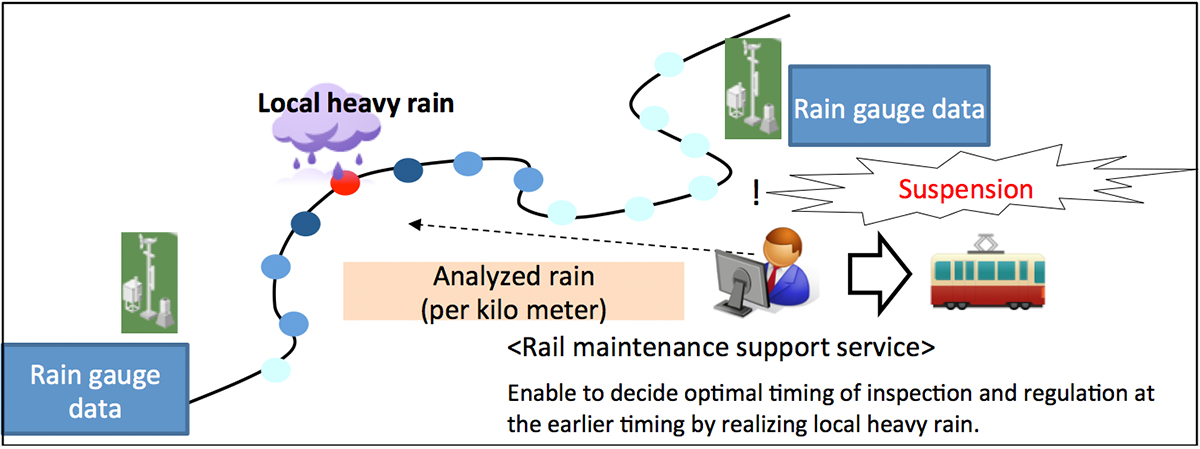Railway
Safe and Stable Transportation Always
Total Diagram Management Service
Concept of Railway Weather Service
Total Diagram Management Service
Railway companies often suspend or adjust speed of their trains for safety in response to weather risks. On the other hand, they would like to operate on time as far as possible. This is their social responsibility for safe and stable transportation. Our Railway Weather Service Team works with the train operators in order to balance safety and stability based on various weather risks, under the concept of TDMS (Total Diagram Management Service).
Weather phenomena impacting the railway industry
Impact of Wind and Rain
Strong winds are able to overturn trains, and thus affect the safety of the transport service. In addition, heavy rain can cause landslides, flooding train stations, equipment damage, etc. It is difficult to decide the correct timing of train suspension/resumption, as there are highly localized effects for strong winds and heavy rains. Relying only on observational data and experimental rules will expose the trains to weather risk. On the other hand, focusing too much on safety could also cause the railway companies to lose the opportunity to operate the train service.
Impact of Snow and Icing
Heavy snow and icing cause not only operational problems for the trains themselves, but also cable freezing and rail switch failure. Therefore, snow removal and prevention of icing is essential. It is important to decide the optimum timing and place for these operations in order to minimize the time that they take away from operation of the trains.
Diagram Planning Support Service Rain, Wind
This service supports the decision of optimal diagram planning by providing a “value scale,” which means the timing/place of strong wind or heavy rain with a few days lead time. Customers arrange crew and decide train suspension, etc. based on this service.
Case example
For example, there are cyclical periods of strong winds along the Sea of Japan coast in the winter. These winds cause suspension or speed adjustment of trains for safety. If the railway companies know ahead of time when the winds will affect which lines, they can make informed decisions on suspensions and minimize the impact on their services.
GO or NG Decision Support
In recent years local downpours have become prominent. In order to capture the situation, there is the idea of adding more rain gauges along the railway tracks, but the limiting factor is the costs involved. By using analyzed rainfall (estimated value amended through radar and rain gauge observations over a 1km area), it becomes possible to monitor not only points but also area to catch downpours that may otherwise slide between two existing rain gauges.
Case example
By utilizing this analyzed precipitation amount, we cannot only capture localized events, but also the data can be used as a backup when official rain gauges are down or monitor lines where there are few such gauges available. The data can then be used to lead to decisions for inspections and restrictions based on weather.

Rail Maintenance Planning Support
This service supports the decision-making process for snow removal by providing the expected peak timing/place of snow and the forecast total snowfall amount
Case example
Special railway rotary snowplows are used to remove snow from the tracks. There are limits on not only the number of the snowplows, but also manpower and when they can be operated. This service provides the timing and place of the peak snow on tracks in order to support railways in deciding the optimal snow removal schedule.
